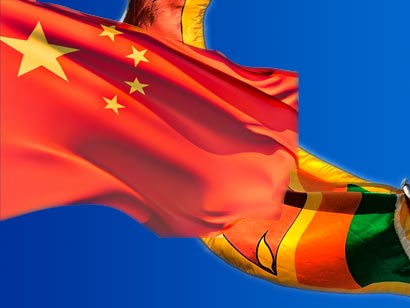Sri Lanka in talks with two Chinese firms for $3 billion refinery

Sri Lanka is in talks with two Chinese companies about investing up to $3 billion to build in a new refinery at its Chinese-controlled port, a top government official said on Friday.
Sri Lanka wants to build a new refinery in its southern Hambantota port, where China Merchants Port Holdings (CMPH) has a 99-year lease to handle commercial operations.
Located near the main shipping route from Asia to Europe, Hambantota port is likely to play a key role in China’s “Belt and Road” trade route initiative.
Mangala Yapa, a director at the state-run Board of Investment, said two Chinese companies had put forward a joint venture proposal for the refinery, which is expected to produce 5 million tonnes per annum with an investment between $2.5 billion and $3 billion. He did not name the Chinese firms.
“The investment is large and we are discussing with the two companies on that basis,” he told Reuters, adding the joint venture plan was chosen from three bids including one from a U.S. company through a local partner.
“The refinery needs around 500 acres of land and we can’t reserve the land. Many people try to get the land first and then look for investors.”
Yapa did not elaborate on the plans of the proposed refinery.
China’s influence over Hambantota port has sparked widespread anger in Sri Lanka.
The deal with CMPH, which has a majority stake in the lease, fueled speculation the port could be used for Chinese naval vessels. CMPH is also in talks with the government to develop an industrial zone next door.
This year, the government revised its original deal with CMPH to give greater influence to the Sri Lankan Ports Authority to try to allay concerns – including from Japan, the United States and India – that the port might be used for military purposes.
The investment zone deal is yet to be signed.
The Hambantota refinery will be the second new refinery the island nation has planned in the country.
Sri Lanka already has a deal for a 100,000 barrels per day-plus (bpd) refinery with Indian Oil Corp at the country’s eastern port city of Trincomalee with the aim of exporting fuel.
Sri Lanka’s sole oil refinery, state-run Ceylon Petroleum Corporation’s decades-old 50,000 bpd plant, was originally configured to run on Iranian crude and Sri Lanka had to import more refined oil products after U.S. sanctions led it to stop imports from Iran.
(Reuters)

Latest Headlines in Sri Lanka
- Court of Appeal to rule on IGP Tennakoon’s arrest warrant on March 17, 2025 March 12, 2025
- Military deserter arrested for sexually assaulting doctor at Anuradhapura Hospital March 12, 2025
- Tuition teacher under investigation for student assault ignores NCPA summons March 12, 2025
- Sri Lanka maintains stance on Adani, open to investment March 12, 2025
- Doctors strike over delay in arrest of sexual assault suspect March 12, 2025



Soon Sri Lanka will be the rubbish dump of the world. Dangerous chemical plants, dangerous ship breaking yards, and many more to come folks. When you submit a port like that you don’t have any control over it. Don’t think China or any other country invest in Sri Lanka ( when their countries got massive unemployment and financial difficulties) for love of our country. They will take more than they give.
if Hambantota is to be an important port of call then to serve its purpose then it should be able to provide the services like fuel water and maybe food. Without a refinery the port cannot meet this obligation without a refinery and chinese will go ahead with this project regardless not so much as an economic proposition but to to accommodate their maritime operations.
US idea of globalisation is having bases as the numbers increase they become vulnerable just as much as providing support for increasing numbers of aircraft careers and supporting array of destroyers and support vessels. So it is just as important for the us to command to global sea lanes just as much as it is for the chinese who are dependent on the import and export of stuff to sustain ther burgeoning economy. the refinery went bankrupt because the refinery could not maintain continuous operations running massive start up costs.
most of the sri lankan planned projects are nothing more than pipe-dreams and then even if they were to materialise sri lanka would be very very hard pressed to find the operational costs. recall as to what became of the last refinery we had! as it is we import processed crude.
there is always a flipside to any project of this magnitude the indians pose the immediate threat and the us is have done little to reinforce the sri lankan development agenda and her allies are just as cagey. the old colonial masters are more interested in undermining sri lankan soverignity as they did in the past